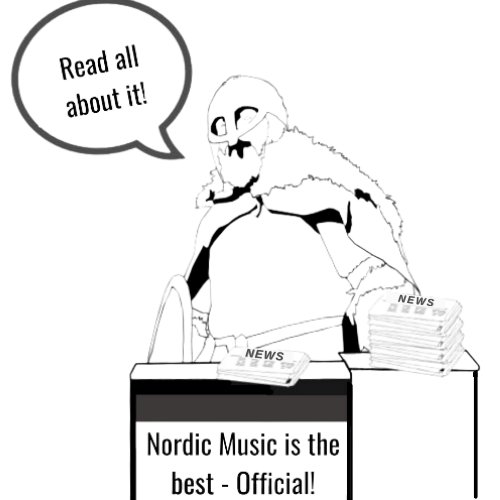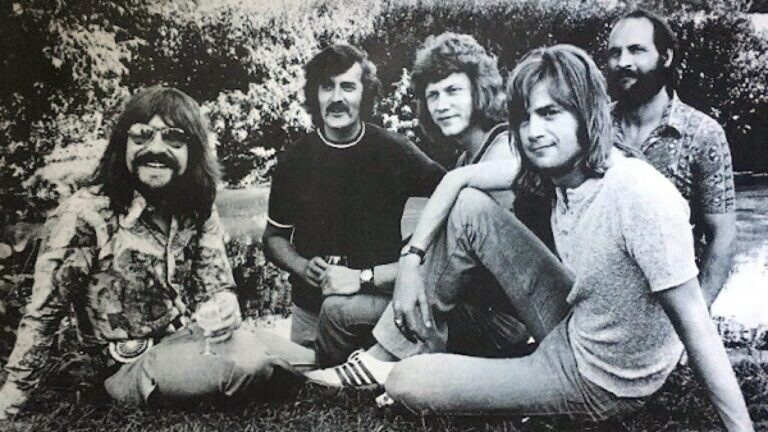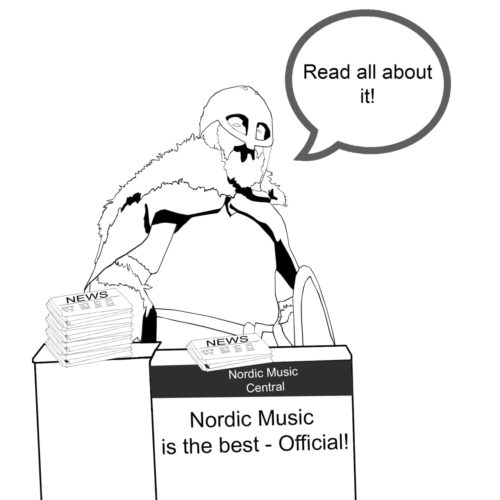Weekend Intermission is our regular feature where we look at an artist or band not from the Nordic countries, just to mix things up a bit.
I started this little ‘Greatest Songs’ feature in the Weekend Intermission section last year but after only two songs got overtaken by events.
The two previous songs were Simon & Garfunkel’s ‘Bridge over troubled water’ which I’ve long regarded as the greatest ever and Nightwish’s ‘Ghost Love Score’ which is the best I’ve heard so far this century.
Then, a couple of weeks ago, and while absentmindedly ‘surfing the net’ as it used to be called, I came across this gem from 1967 which I’d all but forgotten about.
Truth to tell I didn’t pay much attention to it as a kid (and I innocently thought they were singing about kinky Knights, not Nights), but on the odd occasion I hear it played now I realise just how good ‘Nights in White Satin is.
I won’t say too much about it because I don’t need to teach you how to use a search engine, and for the most part I’ll leave you to wallow in this fabulous live version.
Briefly, a little about the Moody Blues, originally a rhythm and blues band which is rarely credited as being one of the founders of progressive (Prog) rock. Well at least the album ‘Days of Future Passed’, their second and home to this track, was distinctly Prog as they fused orchestral/symphonic and rock elements in ways that had not been heard previously.
Hailing from Birmingham they were the predecessors of a movement that seized the music world by storm throughout the 1970s until it wilted under the assault of the diametrically opposed punk movement, causing it to crash and burn.
You could argue they set the scene for ‘symphonic metal’ as well, Birmingham being the UK home of metal, to boot. There are elements of this song alone that you will hear within that sub-genre today.
What’s more, Birmingham was also replete with other ‘orchestral’ bands such as Wizzard, and the Electric Light Orchestra.
‘Nights in White Satin’ was written and composed by Justin Hayward, the song writer, guitarist and lead singer and it featured as the first song on the third and final segment on side two of ‘Days of Future Passed’ which is also notable for being the first concept album by a Prog band. Many more would follow from bands too numerous to mention here.
Initially it didn’t do too well in the charts, reaching only #19 in the UK and #103 in the USA. But when reissued in 1972, the single hit number two in the USA for two weeks on the Billboard Hot 100 and number one on the Cash Box Top 100, making it the band’s most successful single in the United States. It also hit number one in Canada and reached its highest UK position at number nine.
It has made several comebacks since, charting again in 1979 in the UK and Ireland and in 2010 in the UK.
It has also been covered by numerous other artists, most notably Giorgio Moroder, Elkie Brooks, and Sandra.
Justin Hayward wrote and composed the song at the age of 19 while touring and titled the song after a girlfriend gave him a gift of satin bed sheets. Can’t think of a better reason to write a song, can you?
The London Festival Orchestra provided the orchestral accompaniment for three sections but the ‘orchestral’ sounds in the main body of the song were actually produced by Mike Pinder’s Mellotron keyboard which would come to define the Moody Blues’ signature sound. And that would make Pinder one of the earliest users of the Mellotron, which was only invented (in Birmingham) in 1963 and hitherto used only sparingly by Manfred Mann and The Beatles. (Later it became a mainstay of the Prog movement, employed frequently by the likes of Genesis and King Crimson and is still in use today despite the rise of the synthesiser from the 1980s.)
The song tells the tale of a yearning love from afar, which leads many to believe it is a tale of unrequited love endured by Hayward but he has said that “it was just another song I was writing and I thought it was very powerful. It was a very personal song and every note, every word in it means something to me and I found that a lot of other people have felt that very same way about it.”
And I think that is why so many people are attracted to it; because it evokes personal meanings in them. But only recently has its value been realised. So much music was produced in the 1960s that much of it has been overlooked until recently unless it was the product of The Beatles or the Rolling Stones, and unlike the more recent 1980s, where every song in what is regarded as the ‘golden decade’ is often given an airing on radio. You could argue that the 1960s was even more ‘golden’ but that’s for another time.
The group was inducted into the Rock and Roll Hall of Fame in 2018. Not before time.
The song has since garnered much latter day critical acclaim, ranking number 36 in BBC Radio 2’s ‘Sold on Song Top 100’ list.
So what’s so good about it? Where to start? The brilliance of the lyricism, Hayward’s smooth yet dynamic vocal, the fabulous extended instrumental bridge that is a song in its own right, the atmosphere, a presence that gets you in the feels from the opening bars…
Deep and haunting, it is undeniably one of the most beautiful songs to come out of the 1960s.
This is a live performance from 1968 although I think it must have been professionally post-edited to get this sound quality.
Find them on:
Facebook: https://www.facebook.com/MoodyBlues




